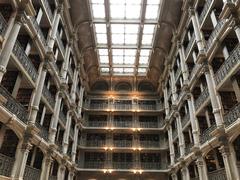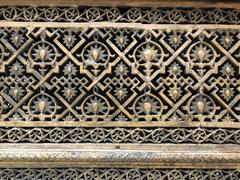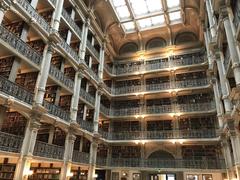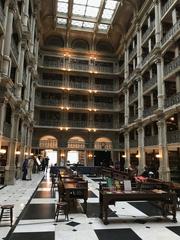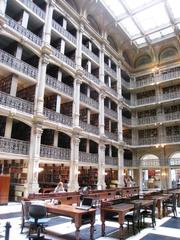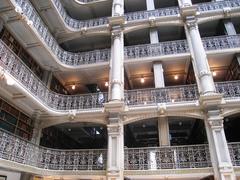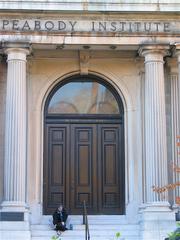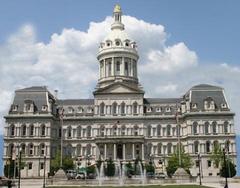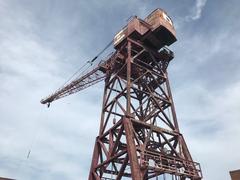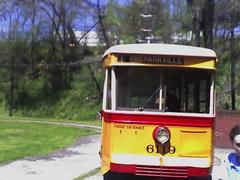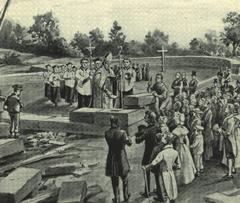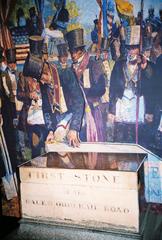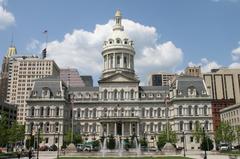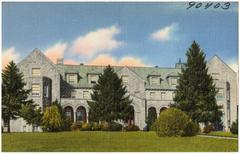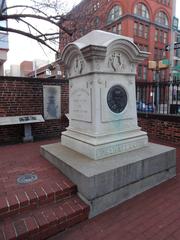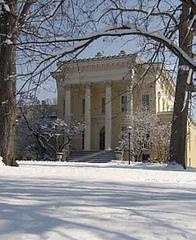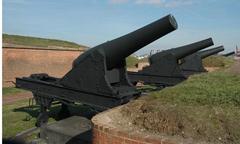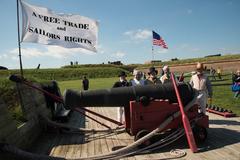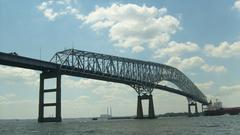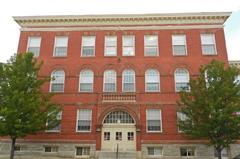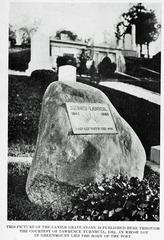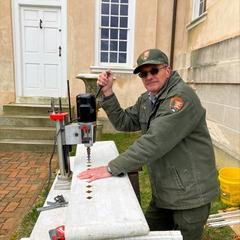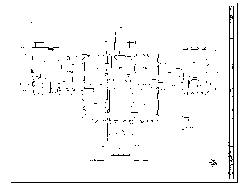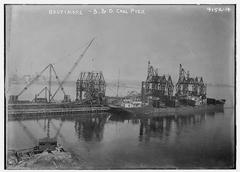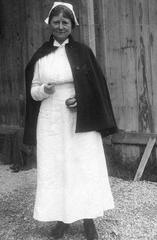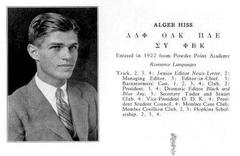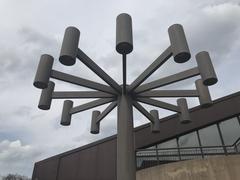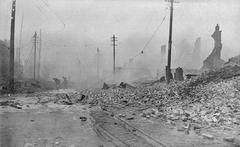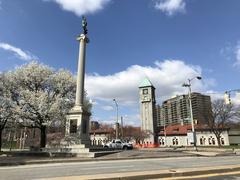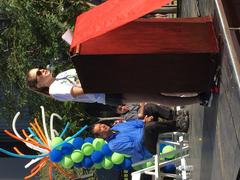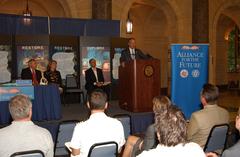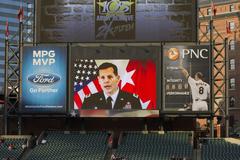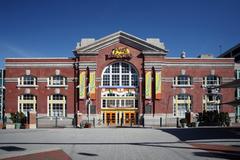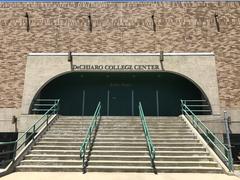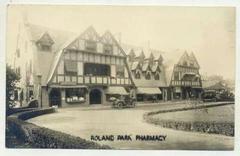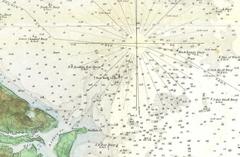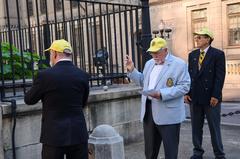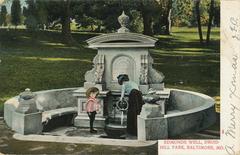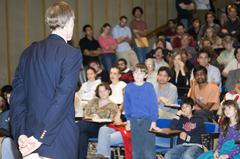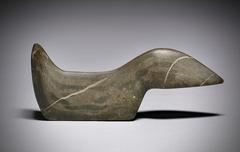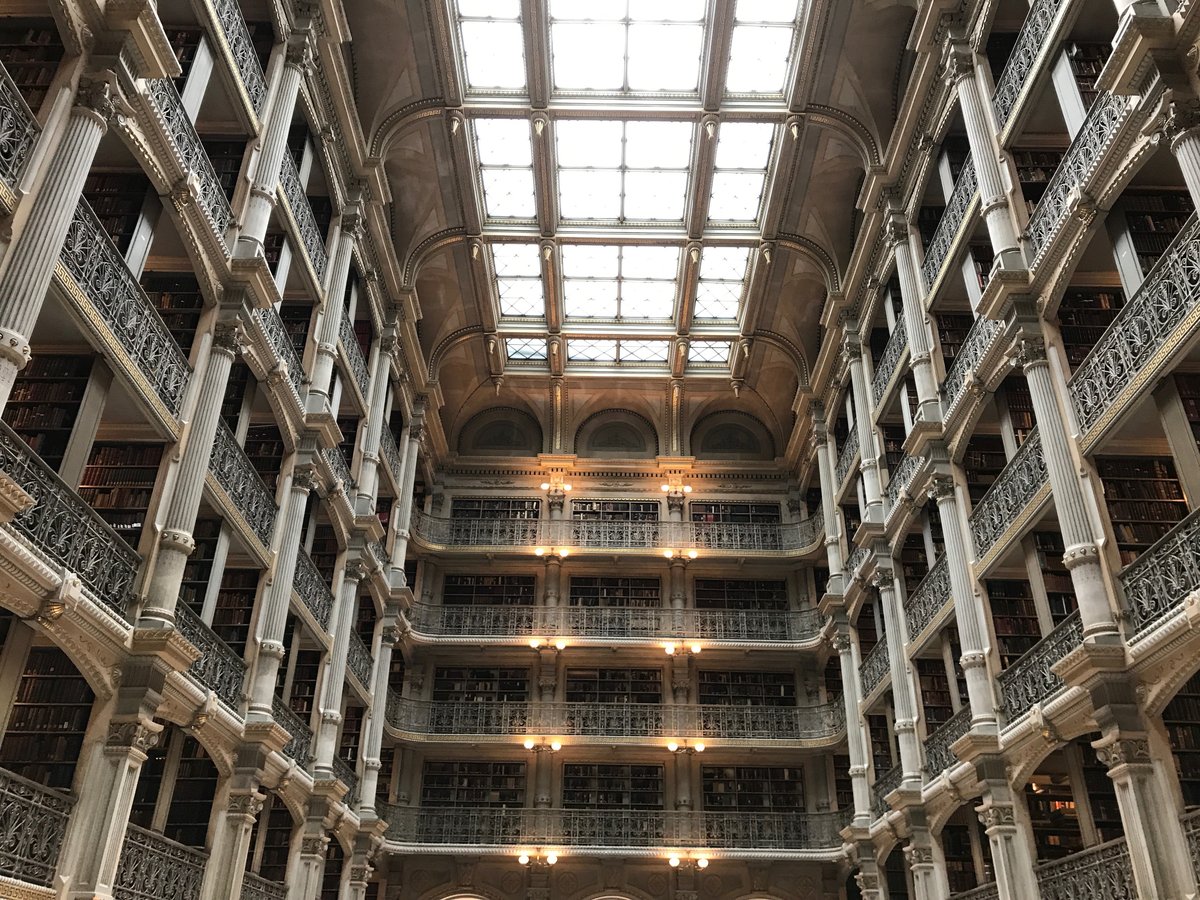
George Peabody Library Baltimore: Visiting Hours, Tickets, and Historical Sites Guide
Date: 14/06/2025
Introduction
The George Peabody Library, situated in Baltimore’s historic Mount Vernon neighborhood, is a remarkable example of 19th-century philanthropy and Renaissance Revival architecture. Known as a “cathedral of books,” it stands as a cultural and intellectual landmark, providing free public access to an extensive collection of over 300,000 volumes. The library’s dramatic cast-iron balconies and 61-foot skylight offer visitors a breathtaking setting, while its connection to Johns Hopkins University ensures ongoing preservation and scholarly engagement. This guide provides essential information on visiting hours, tickets, accessibility, history, and nearby attractions for anyone planning a visit to this Baltimore treasure (Peabody Institute History, JHU Special Collections, George Peabody Library Visitor Information).
Table of Contents
- Discover the George Peabody Library: Baltimore Historical Site
- Founding Vision and History
- Architectural Significance
- Growth and Strengths of the Collection
- Institutional Stewardship and Preservation
- Visiting Hours, Tickets & Accessibility
- Cultural and Civic Impact
- Research Value and Digital Access
- Events, Exhibitions, and Community Engagement
- Nearby Attractions and Travel Tips
- Frequently Asked Questions (FAQs)
- Plan Your Visit
1. Discover the George Peabody Library: Baltimore Historical Site
The George Peabody Library is a must-see destination in Baltimore, admired for its spectacular architecture and scholarly ambiance. Whether you’re a history enthusiast, an architecture lover, or simply exploring the city’s most iconic landmarks, the library offers an immersive and inspiring experience.
2. Founding Vision and History
The library was founded in 1857 by George Peabody, a Massachusetts-born financier and one of America’s earliest philanthropists. Peabody’s endowment aimed to create a cultural and educational center for Baltimore, offering a library “well furnished in every department of knowledge, and of the most approved literature,” free to all who wished to use it (Peabody Institute History, Book Club of Washington). After delays due to the Civil War, the library building was completed in 1878 and quickly became a pillar of Baltimore’s intellectual life (Accidentally Wes Anderson).
3. Architectural Significance
Designed by Edmund G. Lind and Dr. Nathaniel H. Morison, the library exemplifies Renaissance Revival architecture. Its most striking feature is the five-tier atrium with cast-iron balconies, a black-and-white marble floor, and a glass skylight 61 feet above—all elements that give the reading room a sense of grandeur and tranquility (iDesignArch, Book Club of Washington). The building’s design reflects the era’s fascination with classical forms and innovative materials.
4. Growth and Strengths of the Collection
The library’s collection began in 1860 and now holds over 300,000 volumes, emphasizing British and American history, literature, biography, art, architecture, religion, the history of science, and exploration (JHU Special Collections). Most holdings date from the 18th and 19th centuries, with notable treasures including rare first editions and archival materials, such as Darwin’s On the Origin of Species (JHU Newsletter, DC Travel Mag).
5. Institutional Stewardship and Preservation
Initially part of the Peabody Institute, the library became part of the Enoch Pratt Free Library system before joining Johns Hopkins University in 1982. Today, it is managed by the Sheridan Libraries’ Special Collections Department, ensuring ongoing preservation, digitization, and scholarly use (Accidentally Wes Anderson, JHU Special Collections).
6. Visiting Hours, Tickets & Accessibility
- Hours: Monday–Friday: 10:00 AM–5:00 PM; Saturday & Sunday: 12:00 PM–4:00 PM. Check for holiday closures (JHU Library Hours).
- Admission: Free; no advance tickets or reservations required (George Peabody Library Visitor Information).
- Accessibility: The ground floor is wheelchair accessible; upper floors are restricted for preservation (DC Travel Mag).
- Photography: Non-commercial photography is permitted; commercial shoots require prior arrangement (JHU Library).
- Tours & Events: Guided tours and lectures are offered periodically; check the events calendar for details (JHU Newsletter).
7. Cultural and Civic Impact
Since its founding, the library has served as a center for learning, public events, and civic engagement. Its reading room inspires awe, while its Mount Vernon location situates it among Baltimore’s most significant cultural institutions (Book Club of Washington). The library’s ongoing programming, partnerships, and exhibitions foster community involvement and enrich Baltimore’s cultural landscape.
8. Research Value and Digital Access
As a premier research destination, the Peabody Library supports scholars in the humanities and social sciences. Its collections are non-circulating but accessible for on-site research. The library’s catalog is available online, and digitization initiatives expand remote access (Historic Collection at George Peabody Library, JHU Newsletter).
9. Events, Exhibitions, and Community Engagement
The library regularly hosts exhibitions, lectures, and cultural events, including concerts and workshops through its association with the Peabody Institute. The reading room is also a sought-after venue for weddings and private functions (JHU Newsletter).
10. Nearby Attractions and Travel Tips
While visiting the library, explore nearby sites such as the Walters Art Museum, the Washington Monument, Mount Vernon Place, and the Peabody Institute Conservatory. The library is accessible by public transit, and there are nearby parking options, though spaces may be limited during peak times.
11. Frequently Asked Questions (FAQs)
Q: What are the George Peabody Library’s opening hours?
A: Monday–Friday: 10:00 AM–5:00 PM; Saturday & Sunday: 12:00 PM–4:00 PM. Check the official website for any updates.
Q: Is there an admission fee or required ticket?
A: No, admission is free; no ticket is required.
Q: Is the library wheelchair accessible?
A: Yes, the ground floor is accessible. Upper floors are closed to the public.
Q: Can I take photos inside?
A: Yes, non-commercial photography is allowed.
Q: Are guided tours available?
A: Yes, check the events calendar for scheduled tours.
Q: Where is the library located?
A: 17 East Mount Vernon Place, Baltimore, MD 21202.
12. Plan Your Visit
Experience the George Peabody Library’s grandeur and scholarly legacy. Whether you come to admire the architecture, conduct research, or attend a public event, the library offers a unique Baltimore experience. For the most current visitor information, schedules, and virtual tours, visit the JHU Library website.
Enhance your visit with the Audiala mobile app for curated guides, and follow the library and Johns Hopkins University on social media for updates.
Virtual tour and interactive map available at the JHU Library website.
References
- Peabody Institute History
- JHU Special Collections
- Book Club of Washington
- Accidentally Wes Anderson
- George Peabody Library Visitor Information
- George Peabody Library Official Site
- JHU Library Hours
- JHU Newsletter
